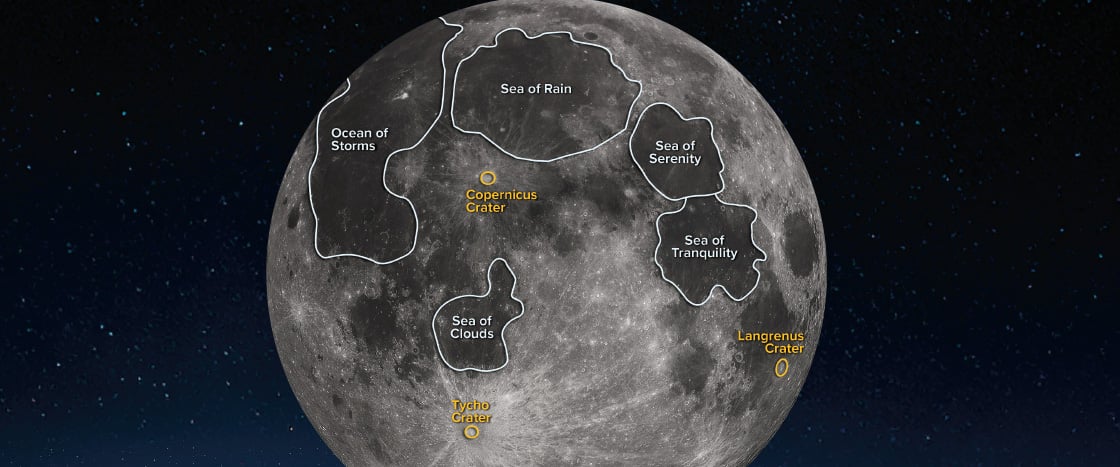When you look up at Earth’s moon at night, here’s a map of what you’re seeing.

Zoom In on the Moon
Check out a map of Earth's moon
inhauscreative/Getty Images (Telescope); Gregory H. Revera/CC via Wikimedia (Moon)
BRIGHT BALL: Our moon, like all moons and planets, doesn’t produce its own light. Only stars do that. As the sun shines on the moon, its light is reflected, or bounced, off the surface. Moonlight is actually reflected sunlight!
SEAS ON THE MOON? Early sky watchers called the dark areas of the moon “seas.” Scientists now know that they’re actually pools of lava that hardened into rock billions of years ago. But the name stuck! Iron in the rock causes it to reflect less light than other areas of the moon. That’s why the patches appear dark.
CRATER DEBATE: The moon has more than 9,000 craters on its surface. For a long time, scientists didn’t agree on how they formed. Studies of moon samples helped solve the mystery. The craters formed when space rocks and comets made of dust and ice collided with the moon’s surface.
FAMOUS NAMES: The largest craters are named after historical figures. This one is named after the Danish astronomer, Tycho Brahe (TEE-koh brah). He lived from 1546 to 1601.
SUPER SEA: The largest “sea” on the moon is named the Ocean of Storms. It’s roughly the size of India!
Why do you think the moon’s seas are larger than its craters?
